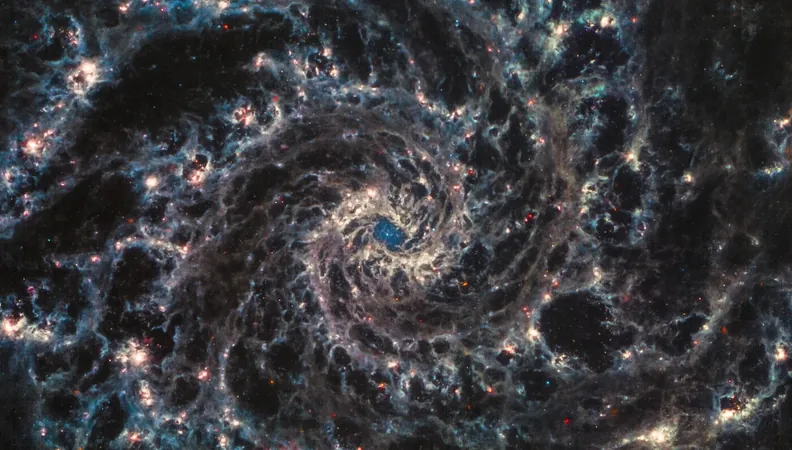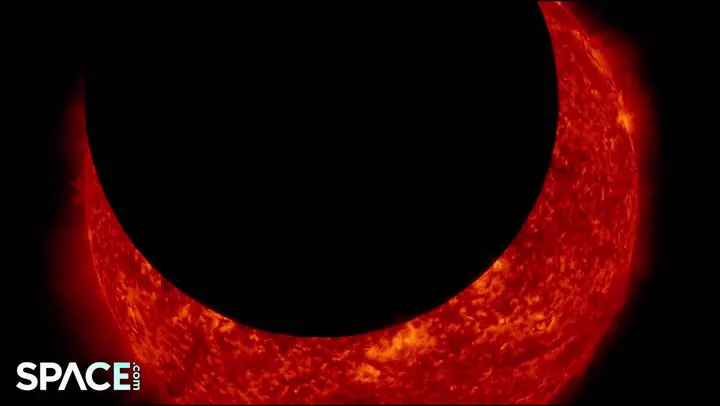
James Webb Telescope Confirms Revolutionary Model of Galaxy Chemical Enrichment
2024-11-04
Author: Charlotte
James Webb Telescope Confirms Revolutionary Model of Galaxy Chemical Enrichment
Astronomers are unlocking the secrets of the cosmos—thanks to our incredible ability to reverse-engineer the universe's history by examining the distant starlight that reaches us. The James Webb Space Telescope (JWST) is pushing the boundaries of our understanding, allowing researchers to delve deeper into how galaxies form and evolve over time.
Recent findings have solidified the validity of long-standing models regarding chemical enrichment in galaxies. In the universe's infancy, the cosmos was primarily composed of hydrogen and helium, which meant the first generation of stars were colossal, short-lived giants. When these primordial stars met their explosive ends, they released heavier elements into the universe, seeding the next generation of stars and planets.
As galaxies evolve, they witness a diverse lineage of stellar forms, from massive blue supergiants to diminutive red dwarfs. The ongoing debate among astronomers centers on which of these groups is most influential in enriching the galactic chemical mix. While one model has argued that massive stars play a crucial role, an alternative perspective emphasizes that smaller, Sun-like stars might be equally, if not more, impactful.
Massive stars die in explosive supernovae, launching enriched materials across the galaxy. In contrast, Sun-like stars have a more subdued end. They swell into red giants and undergo a complex process of helium fusion before ultimately shedding their outer layers. In this explanation, these stars fall under the category of asymptotic giant branch (AGB) stars. While each AGB star contributes less material individually, their sheer abundance in the galaxy offers a compelling argument for their significant role in chemical enrichment.
For two decades, researchers have been puzzled about the dominant players in this cosmic theater. Observing distant supernovae is relatively straightforward, but seeing AGB stars' contributions has proven to be challenging—until now. Thanks to the advanced capabilities of the JWST, a groundbreaking study published in Nature Astronomy has set out to unravel this mystery.
Focusing on three young galaxies, the study leveraged JWST's NIRSpec camera to capture high-resolution infrared spectra. The findings revealed an intriguing abundance of carbon and oxygen bands typical of AGB remnants alongside rarer elements like vanadium and zirconium. This forensic analysis points directly to a specific type of AGB star known as thermally pulsing AGBs (TP-AGBs), which are particularly adept at enriching galaxies.
The TP-AGB stars go through a unique cycle of swelling and cooling, with their outer layers expanding dramatically during their final stages. This tireless pulsing not only enables these stars to contribute chemical elements back into the interstellar medium effectively but also aligns with the findings of the research team, potentially validating the long-standing model that has faced criticism and skepticism.
As astronomers continue to unlock the cosmos' secrets with the JWST, these discoveries arrive at a pivotal moment in our understanding of stellar evolution and the formation of galaxies. The confirmation of the TP-AGB model not only enhances our comprehension of cosmic evolution but also raises new questions: How might our local environments, influenced by varying star populations, change the chemical landscape of galaxies yet to be observed? The universe certainly holds many more mysteries waiting to be unveiled!









 Brasil (PT)
Brasil (PT)
 Canada (EN)
Canada (EN)
 Chile (ES)
Chile (ES)
 España (ES)
España (ES)
 France (FR)
France (FR)
 Hong Kong (EN)
Hong Kong (EN)
 Italia (IT)
Italia (IT)
 日本 (JA)
日本 (JA)
 Magyarország (HU)
Magyarország (HU)
 Norge (NO)
Norge (NO)
 Polska (PL)
Polska (PL)
 Schweiz (DE)
Schweiz (DE)
 Singapore (EN)
Singapore (EN)
 Sverige (SV)
Sverige (SV)
 Suomi (FI)
Suomi (FI)
 Türkiye (TR)
Türkiye (TR)